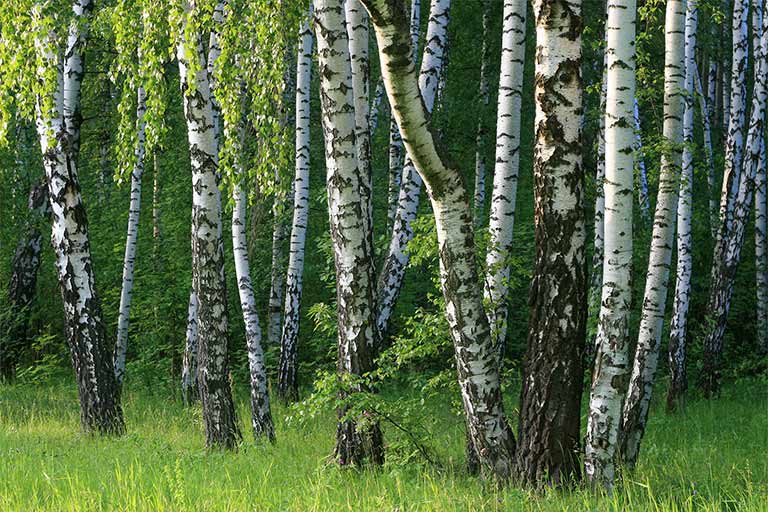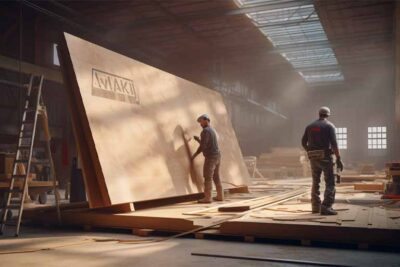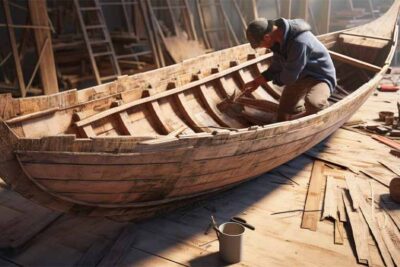
Where Does Baltic Birch Plywood Come From?
Where Does Baltic Birch Plywood Come From?
In parallel with the developing forest industry, the need for wood raw materials is increasing in terms of both quantity and wood diversity. This situation requires the increase of productive forest areas and obtaining more wood raw materials from the unit area. Birch tree has a very important position in the production of general purpose plywood in Europe. Birch logs have a homogeneous structure, a smooth surface after steaming, a homogeneous color and sufficient resistance properties. It is easy to process. No hassle in peeling, cutting, gluing and surface treatments. Accepts paint and varnish well. However, birch has disadvantages such as red line formation, long years before it can reach the cutting age, high costs for plywood production, and difficulty in drying due to its tendency to crack and turn.
Usage Prevalence of Baltic Birch Plywood
Baltic Birch plywood is widely used in the production of general purpose plywood. Approximately 2 million m3 of birch logs were used in Finland in 2006 and 95% of these logs were used in plywood and veneer production. 0.87 million m3 of birch logs were used in Russia, Estonia and Sweden, and 98% of these logs were used in plywood and veneer production.
Where Does the Wood Used to Make Baltic Birch Plywood Come From?
Birch; It is a tree of temperate and cool places that can grow at altitudes from 1300 m to 3000 m. Its light requirement is very high and it grows fast. Baltic Birch Tree likes moisture, grows in rich and poor soils, grows slowly in the first years and then grows rapidly. After the age of 50, growth stops. It is a pioneer tree like Populus tremula and is short lived. It has a very wide geographical distribution. It is common in the northern hemisphere, Europe, Asia, Finland, Sweden, Norway, Russia and Central Europe. It also grows on forest edges, meadows and peatlands, in humus-poor, slightly acidic, dry sandy soils and sandy loam soils. It is seen in North East Anatolia in Turkey, in East Anatolia, for example in the crater of Mount Nemrut, in Tunceli, Munzur Valley, Artvin, Erzurum and Muş provinces.
The countries where the birch tree grows most are as follows;
- Europe
- Central Europe.
- Asia
- Finland
- Sweden
- Norway
- Russia
- Turkey
Why are Birch Plywoods High Quality?
The durable nature of Birch Plywood is a well-known concept, the main reason for this durability; Birch Plywoods are resistant to severe cold in winter, while in summer they need plenty of light and cool air rich in relative humidity. They are resistant to severe cold in winter, and in summer they require cool air rich in relative humidity with plenty of light. For this reason, the cool and damp slopes of the mountains at an altitude of 2000-3000 meters should be considered as the natural habitats of white birches. In the examinations made, it is understood that these birches covered much larger areas 5000 years ago in the Eastern Anatolia Region of Turkey than today. When the plywoods obtained from birch wood are examined, they are of high quality, have high resistance properties and have sufficient hardness. It is generally used in construction, transportation, inner surfaces of products. However, high quality birch veneers are used on surfaces that appear in furniture, interior decoration panels, handicrafts and various special places. Baltic Birch wood has a permeable structure, there is usually a compatibility between summer wood and spring wood.
Why Are Birch Plywoods Strong and Durable?
Birch wood, which is used in birch plywood production, is resistant to bad weather conditions and humidity due to the geographies it belongs to. The biggest feature of the tree; It has brightly colored wood and has an average full dry density. It is stated that the average air-dry density of birch wood is 630 kg/m3. In the studies on some mechanical properties of birch wood, the mechanical properties are higher in the root wood (bottom log part) and close to the root wood of birch wood. Hardwood birch is one of the common wood species used in plywood production. It is one of the most suitable types of plywood production with its superior mechanical properties and beautiful appearance. It is widely used indoors and outdoors. Birch logs to be used for plywood production should be of a certain smoothness and diameter. 50% of the birch log is used at this stage. In addition, since birch is very valuable, the core formed during peeling is not used as waste or fuel and is used in other wood processing industries. Birch grows faster (30-35 years) than other tree species (eg spruce and beech).
The most preferred reasons for Baltic Birch Plywoods are their durability. Its assembly is very robust with materials such as nails or screws. It is very durable for external factors such as cold and hot weather. It can be used for both interior and exterior design. Baltic Birch Plywoods are indispensable for the furniture industry as they are suitable for all weather and living conditions due to the region and forests they belong to. Today, many industries have maximized the use of birch plywood. The biggest reason for this is that birch plywood offers long-lasting use.





